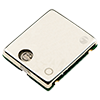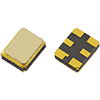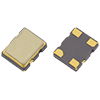Understanding the Role of Frequency Control in IoT Devices and Wireless Sensor Networks
14 Dec 2023
KATIEJENKIN@GOLLEDGE.COM
Are you tired of your smart devices going haywire or your wireless sensor network behaving erratically?
Well, you're not alone. The world of IoT (Internet of Things) devices and wireless sensor networks can sometimes feel like a tangled web of confusion and frustration. But don’t worry. There's a secret in the tech world that can swoop in and save the day. And that secret is frequency control.
In this blog, we’ll learn about the important role of frequency control in IoT devices and wireless sensor networks.
Understanding Internet of Things
Today, Internet of Things or IoT has emerged as a transformative force that revolutionises the way we interact with technology and the physical world around us. It refers to the network of interconnected devices that communicate and exchange data seamlessly, paving the way for innovative applications across various industries.
What are the 4 types of IoT?
- Consumer IoT: Consumer IoT encompasses devices and applications designed for personal use, such as smart home appliances, wearables, and connected vehicles.
- Commercial IoT: Commercial IoT focuses on applications deployed in business and industrial settings. This includes smart buildings, industrial automation systems, and asset tracking solutions.
- Industrial IoT: Industrial IoT refers to the integration of sensors and connected devices into industrial processes. They enable real-time monitoring, predictive maintenance, and improved operational efficiency.
- Infrastructure IoT: Infrastructure IoT involves the deployment of connected devices and sensors to monitor and manage critical infrastructure, like transportation systems, energy grids, and smart cities.
What is an example of an IoT product?
- Smart thermostats: Devices like Nest Thermostat utilise IoT technology to learn user preferences, adjust temperature settings automatically, and optimise energy efficiency.
- Fitness trackers: Wearable devices like Fitbit track users' physical activity, monitor heart rate, and provide real-time feedback to help individuals achieve their fitness goals.
- Smart lighting systems: IoT-enabled lighting systems allow users to control brightness, color, and scheduling remotely using smartphone apps or voice commands.
What is frequency in IoT?
In IoT applications, frequency control plays a crucial role in ensuring reliable communication between interconnected devices. Frequency control devices, such as crystal oscillators, TCXOs, and VCXOs, provide precise timing and synchronisation, enabling seamless data exchange and operation of IoT sensor networks.
These frequency control devices help maintain accurate clock signals, regulate data transmission rates, and synchronise the operation of IoT devices within wireless sensor networks.
By leveraging frequency control products tailored for IoT applications, developers can enhance the performance, reliability, and power efficiency of IoT devices, ultimately unlocking new possibilities for connected solutions in various domains.
Frequency Synchronisation Challenges in IoT and Wireless Sensor Networks
Imagine you have a bunch of IoT devices scattered around your home – smart lights, thermostats, and security cameras. They're supposed to work seamlessly, but instead, they seem to have a mind of their own. Lights flicker randomly, and your thermostat thinks it's the middle of summer in the dead of winter.
The reason behind it? Frequency synchronisation issues. IoT devices and wireless sensor networks rely on precise timing and synchronisation to communicate effectively. When they're not in sync, chaos ensues.
Think of your devices as a synchronised dance troupe. If one dancer goes out of step, the entire performance falls apart. In the tech world, this could mean data loss, unreliable communication, and even an increase in power consumption. And for someone who has all these devices for the sole purpose of making their life more convenient, that entire system breakdown will be extremely frustrating.
So, how can we fix this sync issue? The answer lies in understanding frequency control and using the correct frequency control products to fix the issue.
Optimising Power Efficiency with Frequency Control in Low-Power IoT Devices
IoT devices are often designed to be low power to extend battery life or reduce energy consumption.
However, when synchronisation issues occur, they can result in devices continuously "waking up" to check for data or having to re-transmit data because the last transmission was blocked or the receiver was not on in time to pick it up. This drains their batteries faster than if they were working as expected.
High quality TCXOs are often required to ensure the transmitters and receivers are working within the allotted channel and not causing problems for devices in adjacent channels.
Frequency control comes to the rescue here too. By fine-tuning the timing of when your devices wake up and communicate, you can significantly enhance power efficiency. Think of it as putting your devices on a strict schedule – they only wake up when necessary, conserving power in the process.
This not only saves you money on battery replacements but also reduces the environmental impact of your electronic devices. Therefore, you're not just saving your sanity and efficiency you're also doing your part for the planet.
Key Frequency Control Techniques for Reliable and Scalable Wireless Sensor Networks
Now that we've highlighted the importance of frequency control, let's find out some of the key techniques and products that can help maintain your electronic systems.
- Ultra-low power timers.
- GPS: If you want ultimate precision, look no further than GPS. They provide a reliable reference point for synchronisation, making sure your devices are always in step.
- Time Division Multiple Access (TDMA): Think of TDMA as assigning time slots to devices. Each device gets its moment in the spotlight, preventing collisions and ensuring efficient communication.
- Software-Defined Radio (SDR): SDR on the other hand, allows devices to adapt their frequency , timing, and even modulation scheme on the fly, which is particularly useful in dynamic environments where conditions change rapidly.
Internet of things applications
From smart homes to industrial automation, IoT solutions leverage interconnected devices to gather data, analyse insights, and automate processes. Here are some common applications of IoT and the pivotal role played by frequency control products in enhancing connectivity and functionality:
Smart Home Automation:
- In smart homes, IoT devices such as thermostats, door locks, and security cameras enable homeowners to monitor and control various aspects of their living environment remotely.
- Frequency control products, including crystal oscillators and timing modules, guarantees accurate timing and synchronisation, facilitating seamless communication between interconnected smart home devices.
- By maintaining accurate clock signals and data transmission rates, frequency control solutions enhance the reliability and responsiveness of smart home automation systems, enabling users to enjoy enhanced comfort, convenience, and security.
Industrial IoT Monitoring and Control:
- In industrial settings, IoT sensors and devices play a critical role in monitoring equipment performance, detecting anomalies, and optimizing production processes.
- Frequency control products provide stable and accurate timing references for real-time data acquisition and control in IIoT applications.
- Through precise timing synchronisation and frequency stability, frequency control solutions enable industrial IoT systems to operate efficiently, minimize downtime, and maximize productivity in manufacturing, energy, and logistics sectors.
Asset Tracking and Inventory Management:
- IoT-enabled tracking devices and sensors allow businesses to monitor the location, condition, and status of assets, goods, and inventory in real-time.
- Frequency control products provide accurate timing and positioning data, facilitating precise asset tracking and management in diverse environments.
- By integrating frequency control solutions into IoT tracking devices, businesses can enhance supply chain visibility, optimise inventory levels, and streamline logistics operations, resulting in improved efficiency and cost savings.
Healthcare and Remote Patient Monitoring:
- IoT devices such as wearable health trackers and remote monitoring systems enable healthcare professionals to remotely monitor patients' vital signs, health metrics, and medication adherence.
- Frequency control products, such as real-time clocks (RTCs) and low-power crystal oscillators, ensure accurate timekeeping and synchronisation, enabling reliable data collection and transmission in healthcare IoT applications.
- By leveraging frequency control solutions, healthcare providers can improve patient outcomes, enhance diagnostic accuracy, and enable proactive health management through continuous monitoring and analysis of vital health data.
Future Trends and Innovations in Frequency Control for IoT and Wireless Sensor Networks
The tech world never stands still, and frequency control is no exception.
Here are some exciting trends and innovations on the horizon:
- Ultra-Low-Power Oscillators: These oscillators promise even greater power efficiency, allowing IoT devices to run for years on a single battery.
- Edge Computing: Moving some processing tasks closer to the data source reduces the need for constant communication and reduces the amount of data transferred, further saving power and improving responsiveness.
- Machine Learning: Smart algorithms can predict when devices need to wake up, reducing the amount of data transferred and making IoT networks even more efficient.
Get Expert Help with all Your Frequency Control Needs For IoT
In the world of IoT devices and wireless sensor networks, frequency control is the unsung hero we all need. It's the key to ending the frustration of unreliable devices and saving power, one synchronised beat at a time.
So, the next time you enjoy the convenience of your smart home or benefit from the data collected by wireless sensor networks, remember the importance of frequency control. After all, these components are what keeps our technological world in harmony, ensuring everything runs accordingly. With frequency control, we can all enjoy a smoother, more efficient, and eco-friendly tech experience.
If you're eager to find out more about frequency control and discover advanced solutions for your IoT devices and wireless sensor networks, get in touch with expert team at Golledge today.




